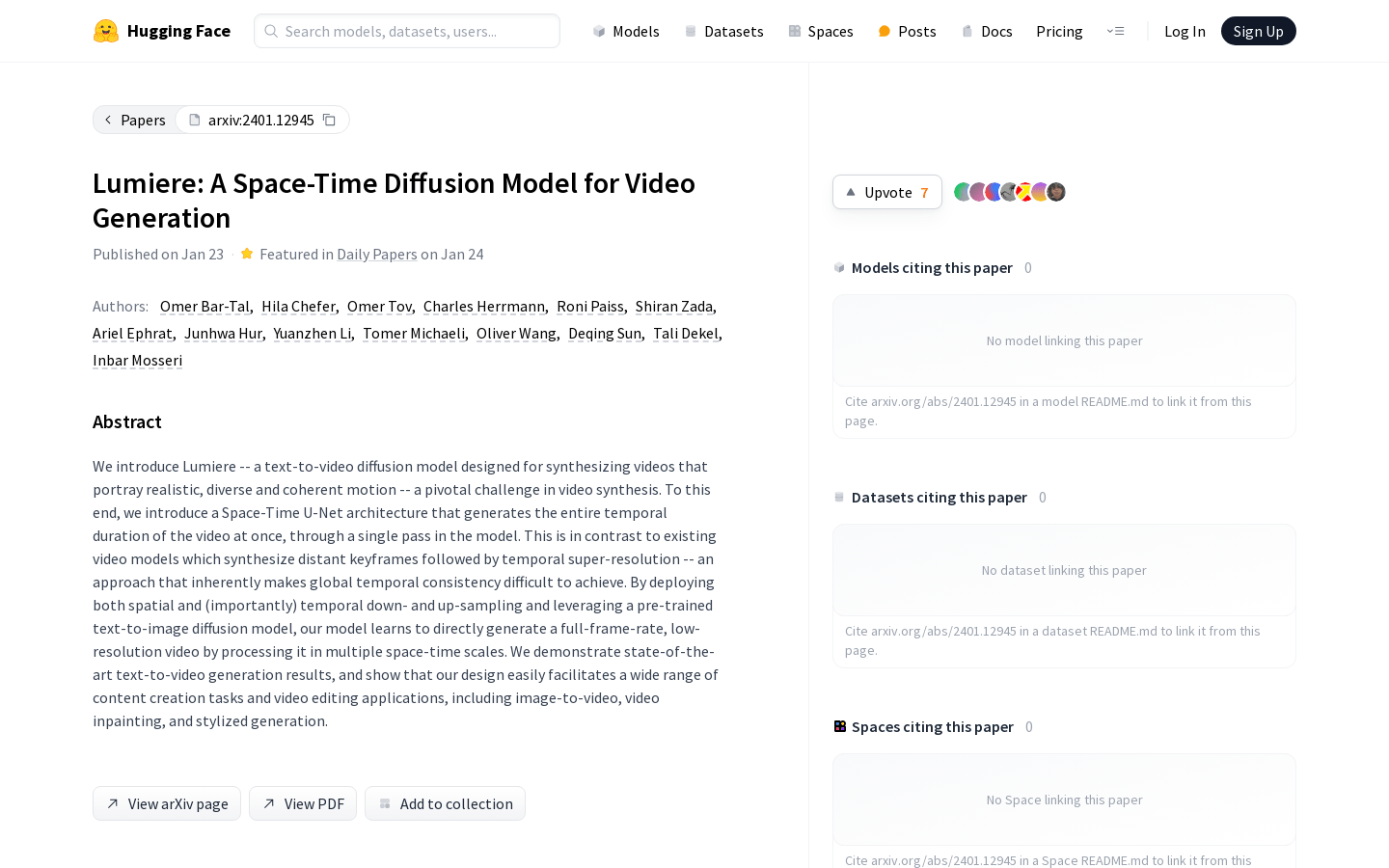

Lumiere
Overview :
Lumiere is a text-to-video diffusion model designed to synthesize videos that exhibit realistic, diverse, and coherent motion, addressing key challenges in video synthesis. We introduce a spatio-temporal U-Net architecture that enables the generation of an entire video's temporal duration in a single model pass. This contrasts with existing video models, which synthesize distant keyframes and then perform temporal super-resolution, a method that intrinsically makes global temporal consistency difficult to achieve. By deploying spatial and, importantly, temporal downsampling and upsampling, and leveraging a pre-trained text-to-image diffusion model, our model learns to directly generate full-frame rate, low-resolution videos at multiple spatio-temporal scales. We demonstrate state-of-the-art results in text-to-video generation and showcase that our design readily facilitates a variety of content creation tasks and video editing applications, including image-to-video, video repair, and style generation.
Target Users :
Suitable for video synthesis, image-to-video, video repair, style generation and other content creation and video editing applications.
Use Cases
Video synthesis application scenario examples
Image-to-video application scenario examples
Video repair application scenario examples
Features
Synthesize videos that exhibit realistic, diverse, and coherent motion
Generate an entire video's temporal duration in a single model pass
Readily facilitate a variety of content creation tasks and video editing applications
Featured AI Tools

Sora
AI video generation
17.0M

Animate Anyone
Animate Anyone aims to generate character videos from static images driven by signals. Leveraging the power of diffusion models, we propose a novel framework tailored for character animation. To maintain consistency of complex appearance features present in the reference image, we design ReferenceNet to merge detailed features via spatial attention. To ensure controllability and continuity, we introduce an efficient pose guidance module to direct character movements and adopt an effective temporal modeling approach to ensure smooth cross-frame transitions between video frames. By extending the training data, our method can animate any character, achieving superior results in character animation compared to other image-to-video approaches. Moreover, we evaluate our method on benchmarks for fashion video and human dance synthesis, achieving state-of-the-art results.
AI video generation
11.4M














